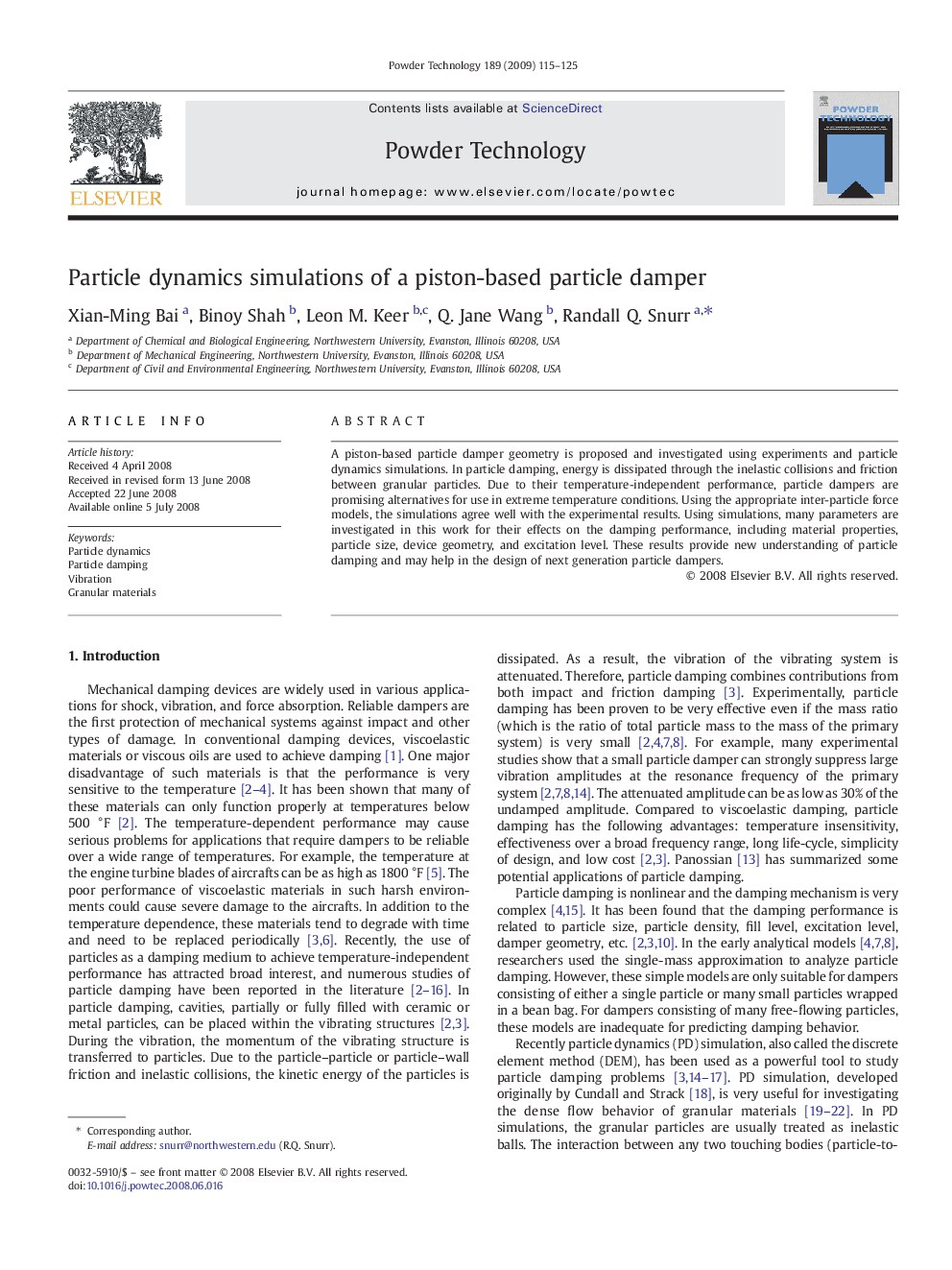| Article ID | Journal | Published Year | Pages | File Type |
|---|---|---|---|---|
| 238630 | Powder Technology | 2009 | 11 Pages |
A piston-based particle damper geometry is proposed and investigated using experiments and particle dynamics simulations. In particle damping, energy is dissipated through the inelastic collisions and friction between granular particles. Due to their temperature-independent performance, particle dampers are promising alternatives for use in extreme temperature conditions. Using the appropriate inter-particle force models, the simulations agree well with the experimental results. Using simulations, many parameters are investigated in this work for their effects on the damping performance, including material properties, particle size, device geometry, and excitation level. These results provide new understanding of particle damping and may help in the design of next generation particle dampers.
Graphical abstractThe damping behavior of a particle-based thrust damper is studied with particle dynamics simulations. Given an initial displacement, the piston vibrates in granular particles of millimeter size. The friction and inelastic collisions between particles dissipate the mechanical energy and attenuate the vibration. Many system and particle parameters are investigated in this work for their effects on damping performance.Figure optionsDownload full-size imageDownload as PowerPoint slide
